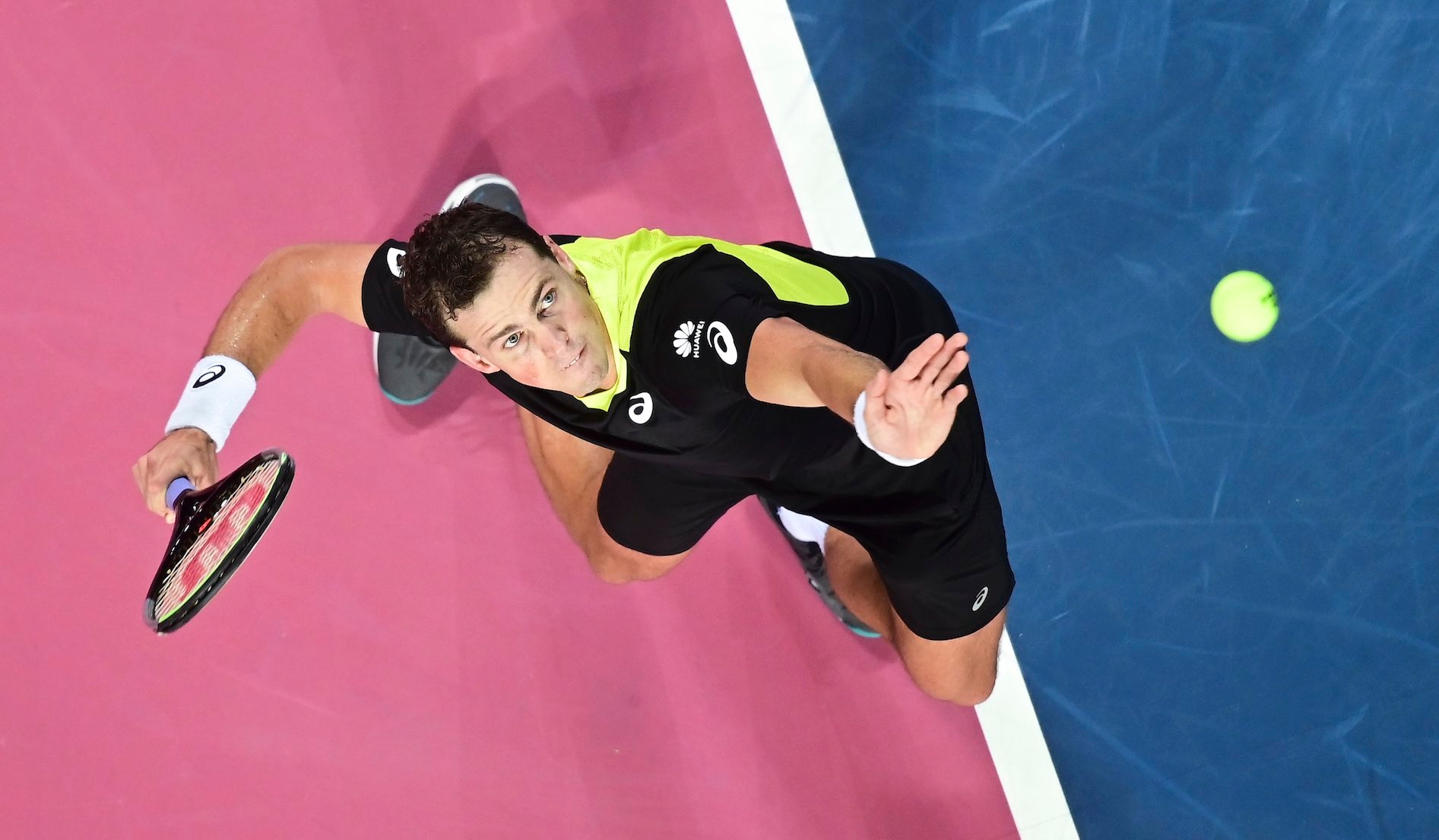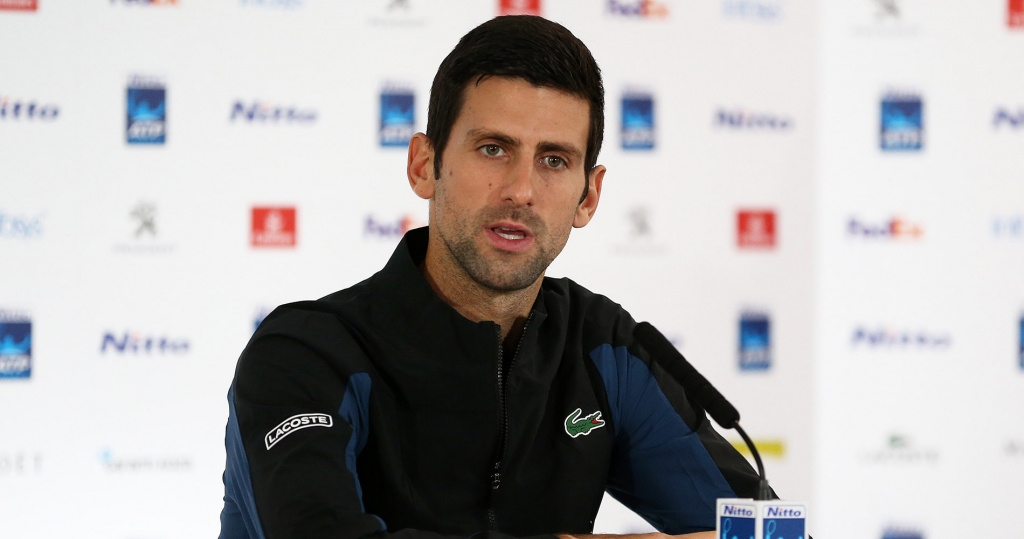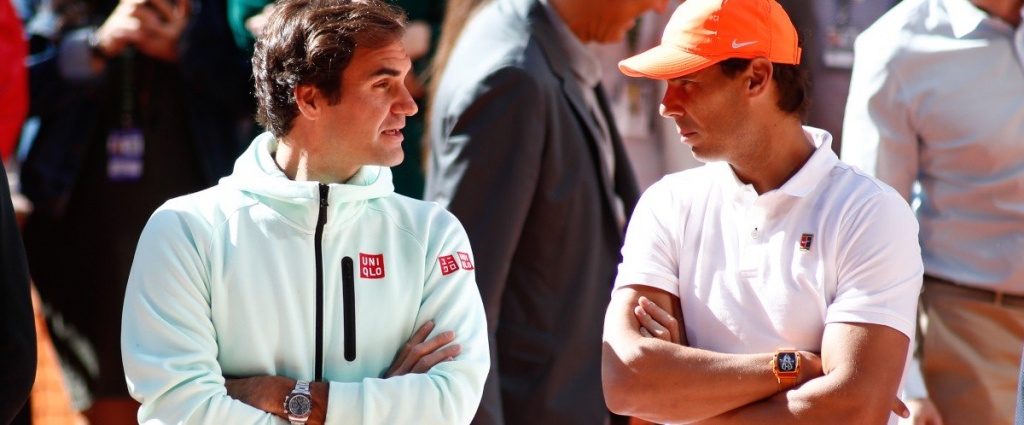Vasek Pospisil exclusive: Why time was right to form the PTPA (Professional Tennis Players Association)
Together with Novak Djokovic, Canadian Vasek Pospisil is one of the men behind the creation of the Professional Tennis Players Association, which was formed on the eve of the US Open. In an exclusive interview, Pospisil tells Tennis Majors how and why it all came about, what leverage it gives the players, the impending addition of the women and how he would love Roger Federer and Rafael Nadal to come on board.
 Vasek Pospisil on the ATP Tour, service, 2020
Vasek Pospisil on the ATP Tour, service, 2020
Vasek Pospisil and world No 1 Djokovic are the brains behind the formation of the PTPA, which was launched with some fanfare on the eve of the US Open. Pospisil, who reached the fourth round at Flushing Meadows, tells Tennis Majors how it all came about, how it might work and what it might do, and what his hopes are for the new association in the future.
What were the main reasons for starting up the PTPA?
“Well, the main reason is just an ongoing, 30-year struggle that the players have, that we have a lack of representation. We’re not a unified voice, we can’t impact any decisions that affect our livelihoods and our lives. The issue is the structure of the ATP. It’s just something the players have wanted and needed for over 30 years. Other sports have it, tennis doesn’t. It just felt like, OK, let’s do it now. Obviously last year, when I started this movement with Norton Rose, then Novak and the women, we had over 70 of the top 100 women and close to 80 of the top men; that was a little bit of a different approach, we were going for the Grand Slams and wanted to negotiate prize money, revenue sharing and funnel any success we had from increasing that, funnel it to the Challenger Tour. Phase two was always going to be trying to create a player association, that was always the plan, that following that Grand Slam we would go and try to kind of organise the players within. This time around, we went straight to trying to organise the players. It’s not a combative movement right now.”
So it’s about the unique structure of the ATP – three tournament reps, three player reps – that you can’t make change?
“Absolutely. The biggest misconception being thrown around right now, is that creating this would be detrimental to the sport and to the vision that our (ATP) management has in place to try to accomplish, which could not be further from the truth. I personally really like Massimo (Calvelli, the ATP chief executive) and Andrea (Gaudenzi, the chairman), I think they’re really great guys, men of principle, competent, smart. For sure, some things could have been handled differently (recently), but this is a pandemic, I never really blamed them for anything that happened in the last five months, to be honest. It has nothing to do with management right now. We’re just trying to organise ourselves, amongst players, which would always need to the case. Even if they did fulfil their vision, players would still need to have some kind of representation and be heard a little bit more. But right now, we’re organising from within and we’ll give them all the time in the world to implement their vision. So that argument is completely irrelevant and not factual and shouldn’t be used to counter, as reasons why we shouldn’t be doing the association. So we’re going to give them all the time, because we like the vision, we like them and we’ll just say, OK, why don’t we start trying to organise because let’s say they’re not successful, at least we’ll have made progress from the players’ side.”
When you say representation, you are talking about legal representation, to defend yourselves against things you don’t like?
“Yeah. I’m talking about being treated as business partners. Right now, that’s not the case. We should be able to come to the table with players and tournaments and leave that discussion where both sides have felt like they have some compromises and everyone’s happy. That’s how it should be done, because we obviously bring a tremendous amount of value to the tournaments, bring a tremendous amount of value… They’re running the show and we are the show. It’s not a union – but being unified is what ultimately gives that leverage where at least in some way we can have these business discussions as partners and not just like, OK, here you go guys, just take whatever we do, these are our decisions, whether you like them or not. That’s the main thing. What we want is to build a real professional team of businessman, so we can have access to the numbers, to the financials of these events, which we don’t have. We don’t even really know right now, we’re so in the dark, in terms of finances. And there are other issues; player calendar, pension, insurance, these are all things that tennis is inferior to other sports. So there are tons of things that need to be revisited and discussed. That’s why we are where we are today and why the PTPA was born.”
When we spoke at Wimbledon last year, you mentioned the ATP were going to let you see the financial details of tournaments. What happened?
“Yeah, at the time, they were saying that the Masters (1000) events had agreed to show their books but they ended up not doing that.”
How many people have signed up to the PTPA? Novak said in press it was around 150?
“I didn’t know he already said the number, OK, that’s good to know. We’re pushing 200 and we’re going to have a significant increase of support as soon as we bring women on board.”
Yes, in the announcement, it seemed like the women were overlooked?
“Yeah, not overlooked. It definitely appeared that way. I think it’s clear based on the movement that we did last year, that we view the women’s side as equals and we appreciate the value they bring, because we did it with them. We have the same law firm, the same leaders, myself and Novak, there’s no reason why we should suddenly change our minds there in a 12-month period, we suddenly don’t value women’s tennis or feel like they shouldn’t be on board. Basically, it happened so quickly… we basically decided that we were going to do this… we already had everything sort of in place, but in terms of reaching out to the players and saying OK, now we’re going to actually create this thing and get the signatures, that happened pretty quickly and the fact we were able to organise it within the ATP, that was… I was working all day to get phone numbers, and simultaneously I was talking to Sloane Stephens, I was saying we’re doing this, we’re going to come to you right after. Looking back, in retrospect, I would have loved to have had a couple more days’ time to prepare because I think that photo would have looked very different. Unfortunately, the reality was that it was a good time to go forward because everybody was there before the tournament, at the US Open. Once players start to play an event, forget about it, right. Players start to lose, they fly home. I wish we’d had maybe 48 hours more to get things going. But I’m pretty sure within seven days you’ll be hearing a very different story.”
The ATP said the PTPA can’t co-exist with it. How can it?
“I don’t really see why not. It kind of, in some ways, just replaces our (ATP Player) Council and our Board reps. I think the only thing it really does is just organise the players in a way we haven’t had, and having legal protection, because right now we’re not legally protected, within the ATP. The Tour can run the way it is running right now but within the ATP we have no protection and if we have our own association we’ll have protection. Maybe something will have to be restructured on paper, but the actual functionality of the Tour should not change whatsoever, in terms of the events, the same events running the way they’re running now. I think just the negotiations would be very different. But in terms of it actually impacting the Tour, I don’t see any reason why that would be the case, unless we had some agenda like if we wanted to start our own Tour because suddenly we would have the kind of power, where, if there were people trying to throw tennis events – by ATP rules…we’re not allowed to play anything other than ATP events – well, that’s a different discussion. That’s not our intention right now, at all. But of course, I’m also not naïve, if you fast-forward six, 12 months, 24 months, whatever, suddenly things could look very different. And if they do, that just means that the ATP hadn’t done a good job, because if we’re having better opportunities that they’re throwing at us, then we’d be crazy not to take it. We’re not trying to do this and disrupt it. OK, what happens and what’s the secondary result is yet to be seen but in terms of the short term, it can absolutely co-exist. And I think it’s because our approach is not combative – they’ve been more combative than we have – but maybe they view it that way and that’s why they feel it would be (not possible).”
Have you spoken to the ATP about everything?
“I spoke to Massimo when the news came out. I have a really good relationship with him – I hope it’s still fine – I really like them. I had a chat with them. Obviously they’re super-disappointed, I reassured Massimo of our intentions. But there are a lot of question marks and uncertainty and obviously that makes them uneasy because they’re trying to do their job and do it well, for their reputation, I get all that. The last thing we want is to create issues for them; right now it can viewed that way but I think in a couple of months’ time they’ll realise that all is OK.”
So you’re not actively talking to them now?
“No, not right now. I just had that one-hour discussion with Massimo when it was announced. Since then we haven’t had any conversations. That might end up happening, I think, at the French Open, once we’re structured and organised better from within, I think that would be a more relevant time to have these discussions with them.”
The sign-ups themselves were effectively a pledge to be part of the association, is that right?
“It was not a contract, it was effectively like a pledge of support, supporting us to move forward in constructing the association the way that was written on this document. The document had the outlines of how we were intending to have the association structured, that was all there. Then the players were essentially reading it and signing, support that if the association was created this way, we would support it. That way we just have an idea of how much support there is before we go through the agony of trying to organise all of this and put in all this work, which is now moving forward because the support is undeniable.”
How will it work?
“It will basically be a Board structure, seven to nine trustees. I would like it…. I think we really need guys from outside of tennis. I think that’s one of the issues we have. Obviously within the ATP, the conflicts of interests are just crazy, so that’s one thing we’re going to avoid. We’re going to try to structure it a little more professionally than we’re currently a part of in the ATP, in the way the Board operates, so no conflict of interest, that will be a big thing, and guys from outside of tennis that know their (stuff).”
Is your main power the option to strike?
“I think the idea is to show how organised and unified we are, so that the tournament side, when we go into negotiations and bring our negotiators…that the tournament side appreciates that we’re organised and then co-operate. There should never be a reason for there to be a strike. If there is, then it’s completely on the tournaments, because that would just that they’re either trying to call a bluff…kind of the way they’ve been operating in previous years, where we didn’t really have this structure to be able to do that. But once we get in the position where we are able to, I don’t expect we will ever have to, if we’re dealing with intelligent businessmen, which we are. I think we’ll have a negotiation, with very reasonable discussions and then that’s it, you make an agreement. Nothing drastic should happen. But the fact that we would be able to potentially boycott is what would potentially give us any kind of leverage in these discussions.”
Last year, you were talking about a boycott in Australia. So, was it not an option in the past because you didn’t have legal protection?
“Yeah, not until last year when I brought Norton Rose, they had protected us in the document, said they would take all legal fees, everything. That’s why last year we were kind of close, even though we decided not. That would have been a time that potentially could have been a successful boycott, because we had the backing of a huge law firm and players felt safe. But ultimately we chose not to, we chose to structure and take a different approach. But that’s not what the PTPA is about right now. Hopefully that never happens, I don’t want that to happen and I don’t think it will, to be honest.”
You were criticised for the timing of the announcement, being in a pandemic?
“It actually makes no difference. If this had a negative impact on the ATP and made their life more difficult in terms of….if suddenly we came, and we were in a boycott, that would be crazy, that would be like, these players are insane because we’re in a pandemic, they’re barely trying to organise to actually have their events and these players are coming and they’re trying to disrupt…we’re not making them work harder or anything.”
Some people have suggested – let’s say if there was a new Tour – that doubles players and lower-ranked players could be squeezed out by this?
“The idea is that wouldn’t happen. We have top-500 singles players. I’m pretty sure players from 4-500 would be against it. We want to represent all of tennis. I think it’s reflected in the movement we did last year that I wanted to double prize money at the Challenger Level, because I wanted players from 100 to 300 to also make a good living. In essence, that is the nature of why we’re starting this, as well, so that should reflect right away in the by-laws that first come out. That’s the full intention, we want to grow the sport, and the wealth for players lower-ranked, including doubles players and lower-ranked singles players.”
You don’t have Roger Federer and Rafael Nadal on board – how difficult is that?
“It’s difficult. It doesn’t help, for sure. One, the statements, I wish they had spoken to us (first) – maybe they didn’t want to – I feel there’s a misinterpretation of what it is we’re tying to do and I feel like that is the main counter-argument against it, so suddenly if you take that away (the misinterpretation), suddenly there’s no counter-argument that makes sense, from a players’ side.”
Will you try to speak to them at some stage?
“I would love to be able to speak to them, if they would like to. I’d love to try to speak to them. I think historically, Nadal is a super player and has been pretty vocal, so I’m optimistic that at least one of those two will join. But they’re also not the (whole) sport, they’re two players. And this is where they get almost too much credit for how big they are. Because what are two players (going) to do if 500 are unified and two aren’t? Obviously because they have so much power they can persuade some players that are not as strong-minded, they can influence certain players because of their star power. But honestly, the sport is much bigger than just a couple of names.”
Is Justin Gimelstob involved in this?
“He’s not included at all. I’ve had so many questions (about this). He’s not. I haven’t had a conversation with him since, I guess, since he left the Tour. He’s not involved at all. I mean, you might have to ask Novak, but there’s nothing that I’m aware of. I don’t see the reason or the value. I don’t even understand why it would be. So, to answer it directly, no.”








